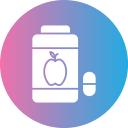Carb Strategies by Workout Type
For lifting and muscle-building sessions, arrive with solid glycogen so you can push volume and quality. A carb-forward meal earlier in the day helps, and a small pre-lift snack can sharpen focus. If your session runs long, consider a quick sip of carbs between big sets, then tell us what improved your pump.
Carb Strategies by Workout Type
Short, repeated bursts demand rapid energy. Topping off before and sipping during breaks can stabilize output across intervals or periods. Even a carbohydrate mouth rinse may boost late-session drive. What keeps your legs lively in the final quarter? Share your sideline strategies and help teammates reading along.

